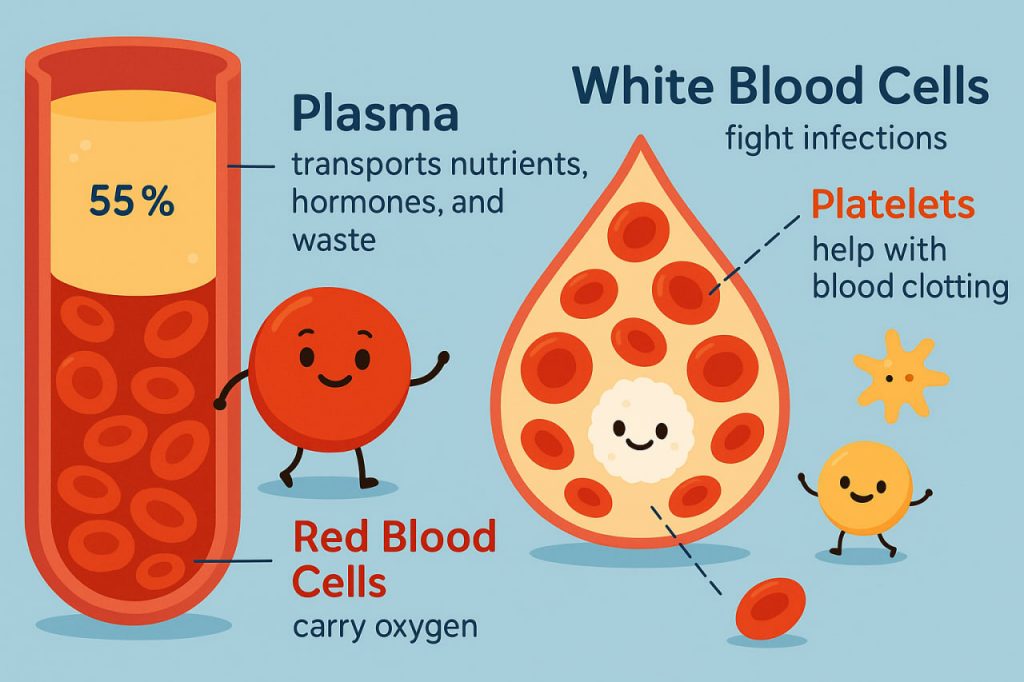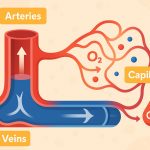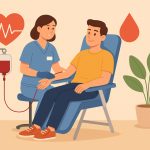Blood is one of the most vital fluids in the human body, making up about 7–8% of body weight. It flows through an intricate network of blood vessels, delivering oxygen and nutrients while removing waste products. Without blood, no organ or cell could function properly.
Composition of Blood
Blood consists of two main parts: plasma and formed elements.
- Plasma
- Makes up about 55% of blood volume.
- A pale yellow fluid, 90% water, that transports nutrients, hormones, and waste products.
- Contains proteins like albumin, fibrinogen, and globulins, which regulate fluid balance, clotting, and immunity.
- Red Blood Cells (Erythrocytes)
- The most numerous cells in blood.
- Contain hemoglobin, a protein that binds oxygen and carries it from the lungs to tissues.
- Also transport carbon dioxide back to the lungs for exhalation.
- White Blood Cells (Leukocytes)
- Defend the body against infections and foreign invaders.
- Several types: neutrophils, lymphocytes, monocytes, eosinophils, and basophils.
- Play key roles in immunity, from attacking bacteria to producing antibodies.
- Platelets (Thrombocytes)
- Small fragments of cells that help with blood clotting.
- Form plugs in wounds and trigger the clotting process to stop bleeding.
Functions of Blood
- Transport
- Carries oxygen, nutrients, hormones, and heat throughout the body.
- Removes waste products like carbon dioxide and urea.
- Protection
- White blood cells fight infections.
- Platelets and clotting factors prevent excessive bleeding.
- Regulation
- Maintains body temperature.
- Balances pH and water levels.
- Distributes hormones and chemical signals.
Why Blood Is Essential
Without blood circulation, organs and tissues would be starved of oxygen and nutrients. Blood also protects against infections, repairs injuries, and ensures that the body remains in a state of balance (homeostasis). Its role makes it one of the most important systems for sustaining life.
Conclusion
Blood is a highly specialized fluid that transports, protects, and regulates the body. With its plasma, red and white cells, and platelets working together, it ensures survival and health. Understanding how blood functions helps explain why maintaining its quality and volume is critical to life.
Glossary
- Plasma – the liquid part of blood that carries cells and nutrients.
- Erythrocytes – red blood cells responsible for oxygen transport.
- Hemoglobin – a protein in red blood cells that binds oxygen.
- Leukocytes – white blood cells that fight infections.
- Thrombocytes – platelets that help stop bleeding.


